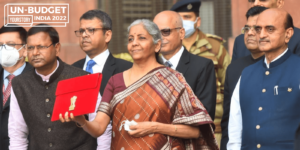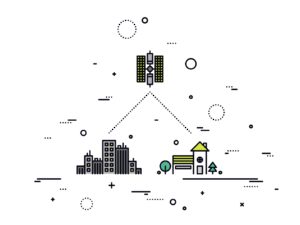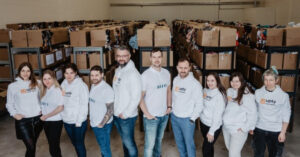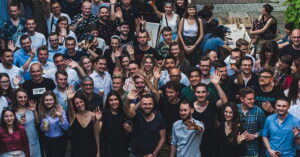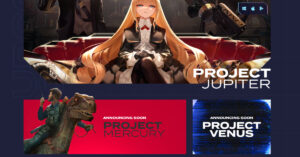The annual Pune Design Festival, now in its 15th edition, is being held online this week due to the coronavirus pandemic. The seven-day event features 30 speakers as well as 10 workshops.
See YS’s earlier write-ups on the 2021 and 2019 edition here, and the DesignUp series of conferences and webinars (2017-2020). Our d.Zen (‘Design Zen’) section for more resources on design.
See also my reviews of the related books Design Your Thinking, Customer-driven Transformation, Customer Innovation, and Frugal Innovation. Check out our pick of Top Quotes of 2020 and 2019 on Design, and The ‘8 Is’ Framework for Design Thinking.
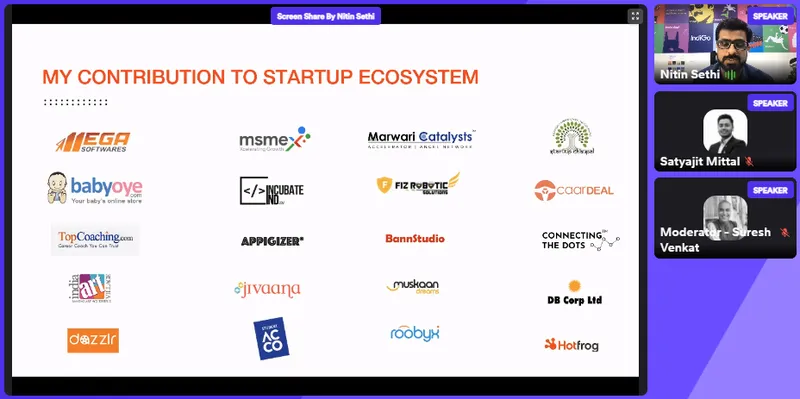
Nitin Sethi at PDF (i)
Customer empathy
The importance of design for business was shared in a session aptly titled ‘Design is Everything. Everything is Design,’ by Nitin Sethi, VP Digital, IndiGo. He previously scaled Quikr.com, Yatra.com, Naukri.com, Indiatimes, and Rediff.
The serial entrepreneur shared stories of the ups and downs of design entrepreneurship from his years across three generations of startups, from the days of Rediff to Quikr. He also successfully exited from startups BabyOye and Mega Software.
“I passed out of a government school, and I had a monthly salary of Rs 3,500 in my first job,” he recalled. In the early days of his career, design was regarded largely as something to do with graphics and animation.
“Customer expectations have changed the ecosystem. In a digital world, you have to be data-driven,” Nitin described. Design is now hybrid or omni-channel, and includes online user experiences as well.
“Customer empathy is as important as salt for your business,” he evocatively described. Design sits at the intersection of business viability, technological feasibility, and customer desirability.
During the pandemic, Indigo Airlines had to address changed customer mindsets and show empathy by making it easier to deal with uncertainty. This ranged from flexi-fares and chatbots to refunds and flight changes.
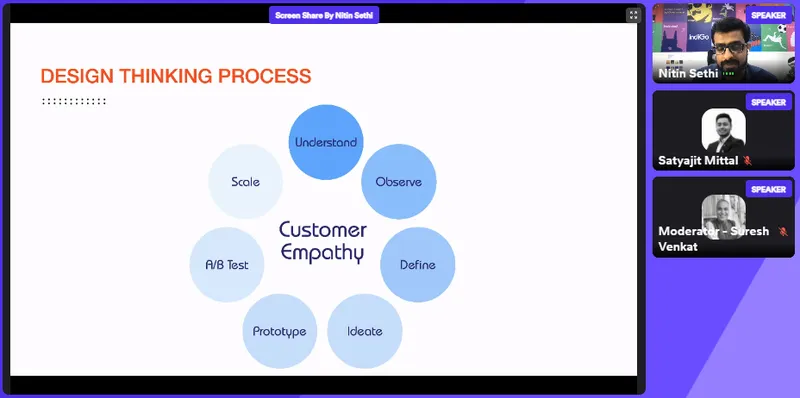
Nitin Sethi at PDF (ii)
Intrapreneurship and entrepreneurship
Nitin regaled the audience with his comparisons between entrepreneurs and intrapreneurs. Intrapreneurs don’t have “balls of steel” like entrepreneurs, he joked – intrapreneurs want the safety of a regular salary, whereas entrepreneurship is about full-time risk.
“Nothing will get done in a 9-to-5 job,” Nitin said. During his startup days, he put in 18 hours per day and not eight hours. “You learn more in one year in a startup than five years in a corporate,” he added.
Nitin described some of the challenges he faced when people whom he thought were friends stabbed him in the back. Entrepreneurship is about hard lessons, like learning to ride a bike only after numerous falls.
He said he has preferred to work for companies that want to take on new challenges even if there is risk that they may shut down. When you enjoy your work, it feels like your company pays you to have fun, he joked.
“You need to have hunger, always ask what is next. You need to learn more. I always do my self-appraisal,” Nitin said.
He relishes his current role heading digital transformation at Indigo Airlines, which now has more than 50 percent market share in India. “Aviation is one of the toughest industries to be in,” Nitin said, pointing to challenges such as weather-related cancellations, regulations, and the pandemic.
In India, each category has the potential for three unicorns. Emerging unicorn opportunities for startups in India lie in voice, video, and vernacular, he advised. “With salt, sugar, and water you can make anything,” he joked.
However, the startup and business culture in India needs to become more mature and progressive, Nitin cautioned. People need to pull each other up as in the Silicon Valley, instead of pulling others down when they succeed.
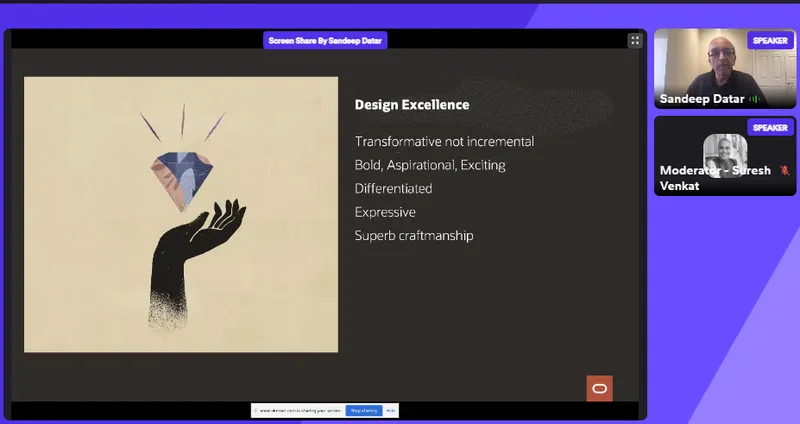
Sandeep Datar at PDF (i)
Design in the enterprise
While much discussion about user experience understandably focuses on customers in B2C contexts, another world opens up in the case of UX for employees in large enterprises, explained Sandeep Datar, VP, User Experience and Product Design, Oracle.
“Design has grown from an afterthought to a function. I least expected to see a warm big hug for design at a company like Oracle. It was a moment of ecstasy,” he recalled. Designers now have a seat at the table, and are responsible for brand renewal.
The philosophy of design shapes brand identity and design language at Oracle, and is named Redwood. Enterprise design attitudes are shifting, and there is a focus on human needs and natural influences. There is colour and texture in life, and design should reflect this and need not be flat and stark, he cautioned.
The enterprise software view of “design for endless possibilities” is shifting to “design for probabilities.” Instead of designing for everybody, it helps to focus on more likely scenarios. A number of startups are getting into this space of simplification and automation, Sandeep observed.
Design leaders in an enterprise should themselves be great designers, he recommended. “They will make design strategy and philosophy resonate,” he said. They will be able to recognise and hire great design talent as well.
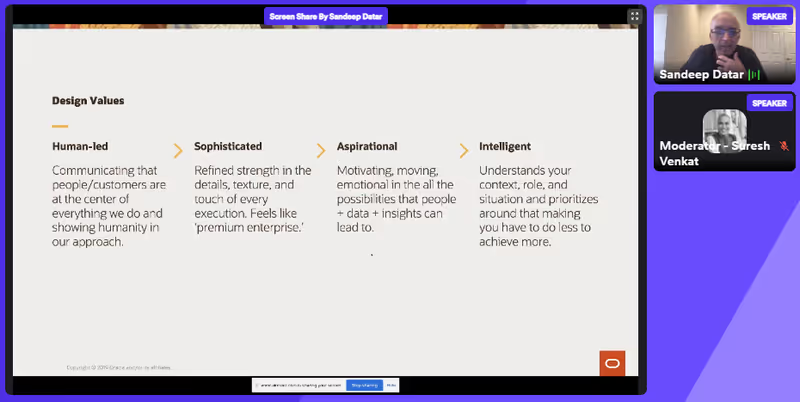
Sandeep Datar at PDF (ii)
User experience for employees
Sandeep spelled out Oracle’s design values: human-led, sophisticated, aspirational, and intelligent. The design language covers aesthetics, tone, interaction and conversations.
The design approach in Oracle governs touchpoints for employees as well, and includes human-drawn textures as well as interaction design of tools. “This includes the pleasure of recognition and the promise of meaning,” Sandeep evocatively described.
For example, the expense management app has expanded to include proactive recommendations on payment practices for employees when they visit another country for sales meetings. Care has been taken to understand the expectations and workflows of managers, approvers and employees, Sandeep showed.
Design excellence inspires and motivates employees. This can help them excite customers as well, according to Sandeep.

Sandeep Datar at PDF (iii)
Projects and engagement
Lighthouse projects play a key role in evolving design within the enterprise. They convey vision, create excitement, and generate desirability, Sandeep said.
It is important to distinguish between visioning and versioning, and know when to allow for excitement without execution pressures, he emphasised.
Storytelling and narratives should capture scenarios and signature moments. The ultimate goal should be to steer the conversation towards solving problems, he recommended.
“Have courage, don’t ask for permission,” Sandeep advised enterprise designers. Engagement dialogues could be framed as I have an idea, but I could be wrong – this may elicit responses like How can I help?
This helps win over others as partners in new initiatives, and make them stakeholders as well. Ultimately, everyone in a company should think about design, this will help democratise the act of creation, Sandeep suggested.
A clear vision helps align a large and diverse team of designers. Pointing to some differences, he observed that Indian designers seem better at logic and analysis than visualisation or creativity.
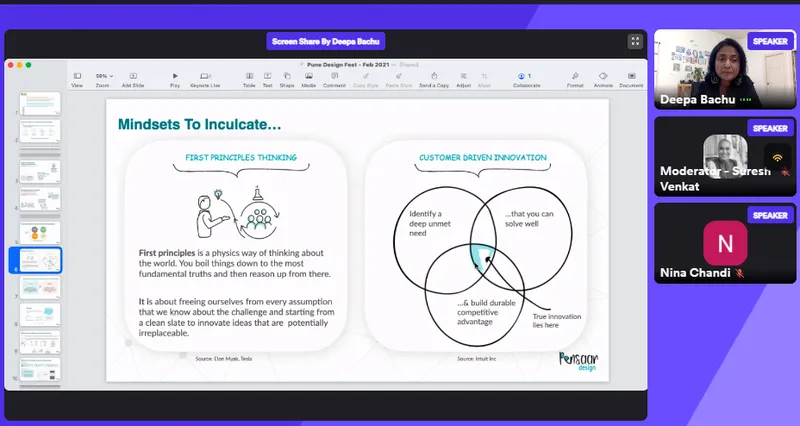
Deepa Bachu at PDF (i)
A culture of customer innovation
Falling in love with the problem and being maniacally focused on the customer experience helps companies excel, explained Deepa Bachu, Co-founder and CEO of design strategy firm Pensaar.
Customer obsession involves getting to know customers better than they know themselves. This calls for extensive customer research, and working from first principles, she advised.
This also requires specific priorities and approaches to observe, draw insights, dream, and disrupt. Citing frameworks from Intuit, she showed that customer innovation lies at the sweet spot of intersection between a customer need, an effective solution, and competitive advantage.
One of the projects she led earlier at Intuit (Fasal) went on to become an HBR case study. It is a tool to give farmers market advantage via pricing and agricultural advisory information.
To help surface and overcome assumptions and biases, Deepa shared a tool called FOG to flesh out facts, opinions, and guesses. This helps figure out what evidence is at hand, what beliefs and interpretations exist, and what hypotheses drive judgment.
“To get into your customer’s shoes, you have to take your shoes off first,” she evocatively said. She distinguished between “customer focused” and “lip service” companies, depending on their level of customer commitment.
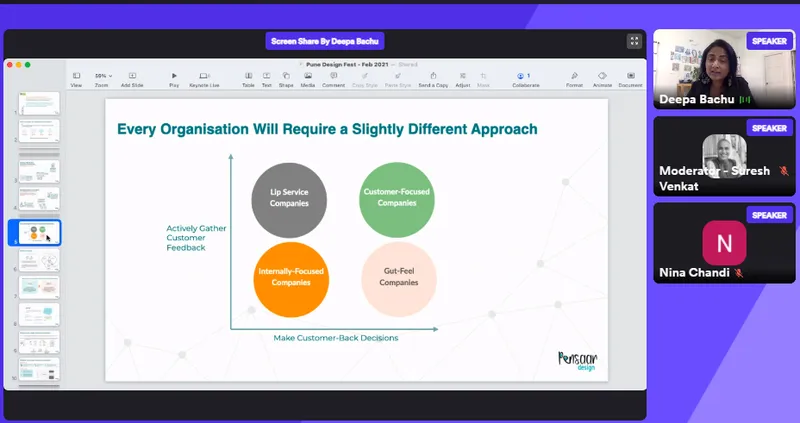
Deepa Bachu at PDF (ii)
Traditional approaches to brainstorming have problems like ending up with the least common denominator, or following the HIPPO (highest-paid person’s opinion). Deepa advised a better approach where people first think individually and only then collaborate.
Behavioural economics contributes frameworks like ‘nudge’ theory to drive customers towards desired actions. But this requires a proper understanding of customers to first understand why their behaviours or beliefs are different. Such approaches have been used by ITC to improve safety practices among its employees, Deepa explained.
While much has been said about the benefits of “fail fast” in the world of startups, it is also important to avoid “crash and burn,” she signed off.
Founders should ensure that they have addressed the proper problem before they prototype and scale a solution.


